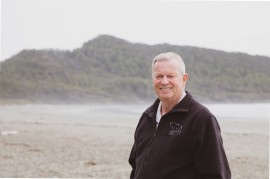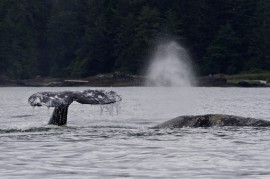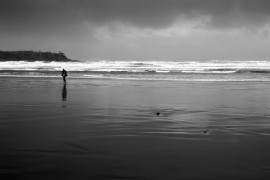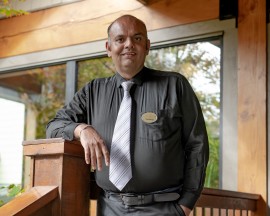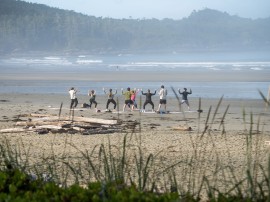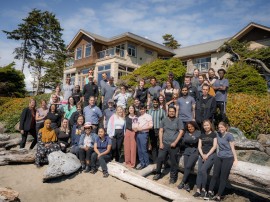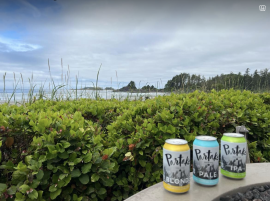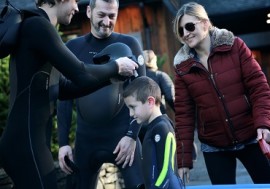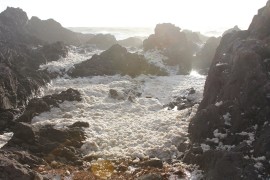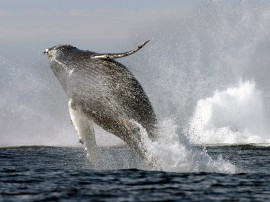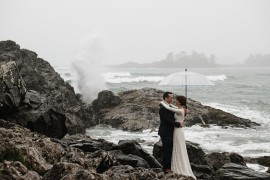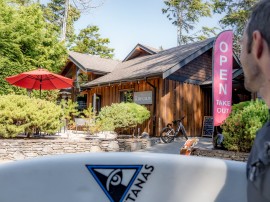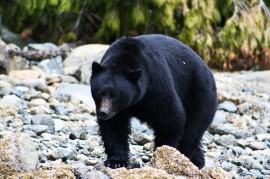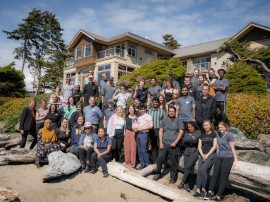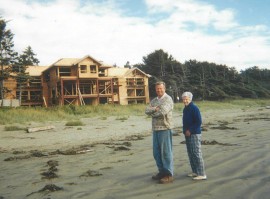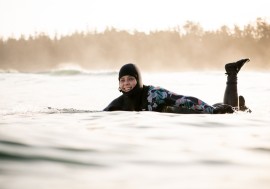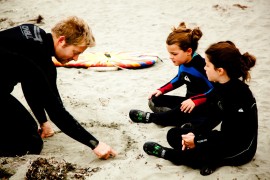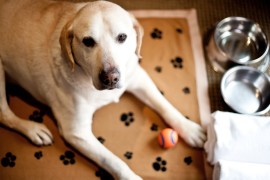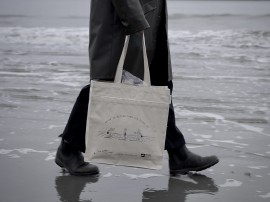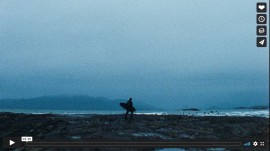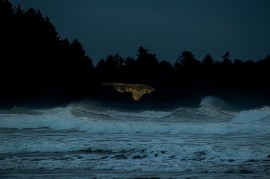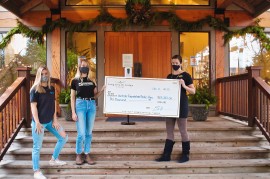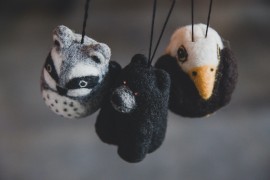Stellar sea lion rescue
The recent rescue of a Steller sea lion off Long Beach illustrates the importance of keeping garbage out of the ocean and ongoing diligence and conservation efforts.A team comprised of Federal Fisheries officers and Vancouver Aquarium veterinary staff tranquilized an adult female Steller sea lion which had a plastic packing band cutting deep into the blubber around its neck.
Armed with a CO2-powered dart rifle, veterinarian Dr. Marty Haulena shot an anesthetizing dart into the enormous sea lion which weighed at least 300 kilograms. After about 12 minutes - and after the drugs had fully taken effect - Dr. Haulena and assistant Chelsey DeColle disembarked from their inflatable boat and approached the drowsy sea lion from above and behind.
The other sea lions slid off the rocks and into the ocean to bob about while Dr. Haulena cut the packing band from the neck of the female. The startled-but-drowsy sea lion was able to follow her herd into the ocean causing concern among the fisheries and veterinary staff.
 |
 |
While anesthetized sea lions can fall asleep as easily in the water as on land, Dr. Haulena explained to the Vancouver Sun that “their reflex to lift the head and breathe remains intact.” Still, crews on the accompanying vessels stayed close, keeping watch over the sea lion which repeatedly floated to the surface, gulped air and then sunk below the waves.
Eventually, the sea lion stabilized and was able to swim away.
According to the Vancouver Aquarium, disentanglement usually involves not only removing the packing strap, but cleaning the wound, administering antibiotics, taking a blood sample for further study, collecting the debris the sea lion is tangled in, and tagging the animal.
Entanglement in garbage and marine debris is one of the human-caused issues they’re facing: it’s estimated there are as many as 400 sea lions ensnared in trash in just the Pacific Rim National Park region of B.C.’s coast. “This again was a plastic packing strap, a material we’re seeing repeatedly in these rescue efforts,” explained Dr. Haulena.
The complex nature of sea lion disentanglements requires a veterinarian with marine mammal experience to carry them out, which is why Dr. Haulena is currently the only vet in Canada able to perform these rescues, but he has support from staff at the Marine Mammal Rescue Centre, Fisheries and Oceans Canada and from Vancouver Aquarium affiliate researcher Wendy Szaniszlo, who has been documenting entangled sea lions on our coast since 2005.
It’s important to note that sea lions are large, wild animals and rescues should not be attempted by the public. If you see a marine mammal in distress, call Vancouver Aquarium's Marine Mammal Rescue Centre at 604 258 SEAL (7325) or Fisheries and Oceans Canada at 1 800 465 4336.
“Do not try to handle marine animals,” said Dr. Haulena. “Improper removal of entangled gear may make the injury worse as vital structures, such as veins, arteries and nerves lie in close proximity to the entanglements.”

